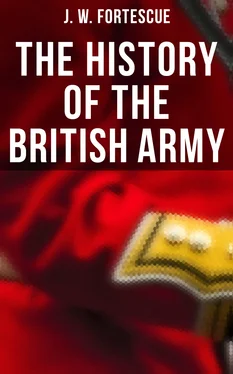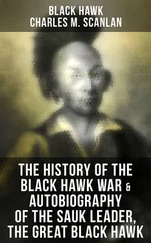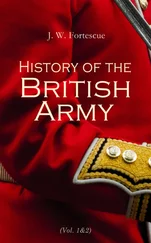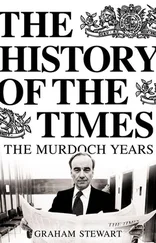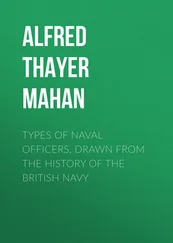1252.
After the Charter the national force was composed nominally of three elements, the tenants in chief with their armed vassals, the minor tenants in chief, and the freemen subject to the Assize of Arms, the last two being both under the orders of the sheriffs. It made an imposing show on paper, but was difficult to bring efficient into the field. No man was more shameless than Henry the Third in forcing knighthood, for the sake of the fees, upon all free landholders whom he thought rich enough to support the dignity; yet, when the question became one not of money but of armed men, he was forced to fall back on the same resource as his greater namesake. He simply issued a writ for the enforcement of the Assize of Arms, and ordered the sheriffs to furnish a fixed contingent of men-at-arms, to be provided by the men of the county who were subject thereto.
1282.
The defects of feudal influence in military matters were now so manifest, that Edward the First tried hard to do away with them altogether. Strictly speaking the feudal force was summoned by a special writ addressed to the barons, ordering them to appear with their due proportion of men and horses, and by similar directions to the sheriffs to warn the tenants in chief within their bailiwicks. The system was however, so cumbrous and ineffective that Edward superseded it by issuing commissions to one or two leading men of the county to muster and array the military forces. These Commissions of Array, as they were called, will come before us again so late as in the reign of Charles the First.
1285.
But, like all his predecessors, Edward was careful to cherish the national militia which had grown out of the fyrd. The Statute of Winchester re-enacted the Assize of Arms and redistributed the force into new divisions armed with new weapons. The wealthiest class of freemen was now required to keep a hauberk[11] of iron, a sword and a knife, and a horse. The two lower classes were now subdivided into four, whereof the first was to keep the same arms as the wealthiest, the horse excepted; the second a sword, bow and arrows, and a knife; the third battle-axes, knives, and "other less weapons," in which last are included bills;[12] and the rest bows and arrows, or if they lived in the forest, bows and bolts, the latter being probably less deadly to the king's deer than arrows. Here then was the axe of Harold's day revived, and the archers established by statute. It is evident, from the fact that they wore no defensive armour, that the archers were designed to be light infantry, swift and mobile in their limbs, skilful and deadly with their weapons. The name of Edward the First must be ever memorable in our history for the encouragement that he gave to the long-bow; but we seek in vain for the man, if such there was, who founded the tradition, still happily strong among us, that the English whatever their missile weapon shall always be good shots. Even at the siege of Messina by Richard the First the archers drove the Sicilians from the walls; "for no man could look out of doors but he would have an arrow in his eye before he could shut it."
1297.
1298.
The bowmen had not long been a statutory force before they were called upon for active service. The defeat of the English by William Wallace at Cambuskenneth had summoned Edward from France to take the field in person against the Scots; and he met them on the field of Falkirk. The Scottish army consisted for the most part of infantry armed with pikes, not yet the long pikes of eighteen feet which they were to wield so gallantly under Gustavus Adolphus, but still a good and formidable weapon. Wallace drew them up behind a marsh in four circular battalions ringed in with stakes, posting his light troops, which were armed principally with the short-bow, in the intervals between them, and his one weak body of horse in rear. The English knights were formed as usual in column of three divisions, vanguard, battle and rearguard, and with them was a strong force of archers. Untrue to its old traditions, the English cavalry did not dismount, but galloped straight to the attack. The first division plunged headlong into the swamp (for the mediæval knight, in spite of a hundred warnings, rarely took the trouble to examine the ground before him), did no execution, and suffered heavy loss. The second division, under the Bishop of Durham, then skirted the swamp and came in sight of the Scottish horse. The Bishop hesitated and called a halt. "Back to your mass, Bishop," answered one contemptuous knight. His comrades charged, dispersed the Scottish cavalry, and drove away the archers between the pikemen; but the four battalions stood firm and unbroken, and the knights surged round them in vain. Then the king brought up the archers and the third division of horse. Pushing the archers forward, he held the cavalry back in support until an incessant rain of arrows had riddled the Scottish battalions through and through, and then hurling the knights forward into the broken ranks, he fairly swept them from the field. It was the old story, heavy fire of artillery followed by charges of cavalry, the training of the Scots as Hastings had been of the English, for the trial of Waterloo.
1314.
It is interesting to note that Edward made an effort even then for the constitutional union of the two countries which had so honourably lost and won the day at Falkirk, but he was four centuries before his time. The war continued with varying fortune during the ensuing years. The maker of the English archers died, and under his feeble son the English army learned at Bannockburn an ignominious lesson in tactics. The Scotch army, forty thousand strong, was composed principally of pikemen, who were drawn up, as at Falkirk, in four battalions, with the burn in their front and broken ground on either flank. Their cavalry, numbering a thousand, a mere handful compared to the host of the English men-at-arms, was kept carefully in hand. Edward opened the action by advancing his archers to play on the Scottish infantry, but omitted to support them; and Bruce, seeing his opportunity, let loose his thousand horse on their flank and rolled them up in confusion. The English cavalry then dashed in disorder against the serried pikes, failed, partly from want of space and partly from bad management, to make the slightest impression on them, and were driven off in shameful and humiliating defeat. So the English learned that their famous archers could not hold their own against cavalry without support,[13] and they took the lesson to heart. The old system of dismounting the men-at-arms had been for the moment abandoned with disastrous results; the man who was to revive it had been born at Windsor Castle just two years before the fight.
1327.
1333.
Thirteen years later this boy ascended the throne of England as King Edward the Third, and almost immediately marched with a great host against the Scots. The campaign came to an end without any decisive engagement, but on the one occasion when an action seemed imminent, the English men-at-arms dismounted and put off their spurs after the old English fashion. Peace was made, but only to be broken by the Scots, and then Edward took his revenge for Bannockburn at Halidon Hill. The English men-at-arms alighted from their horses, and were formed into four battalions, each of them flanked by wings of archers, the identical formation adopted two centuries later for the pikemen and musketeers. The Scots, whose numbers were far superior, were also formed on foot in four battalions, but without the strength of archers. "And then," says the old historian,[14] "the English minstrels blew aloud their trumpets and sounded their pipes and other instruments of martial music, and marched furiously to meet the Scots." The archers shot so thick and fast that the enemy, unable to endure it, broke their ranks, and then the English men-at-arms leaped on to their horses for the pursuit. The Scotch strove gallantly to rally in small bodies, but they were borne down or swept away; they are said to have lost ten thousand slain out of sixty thousand that entered the battle.
Читать дальше
